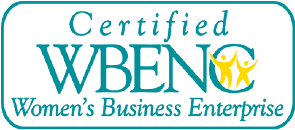Our Flight Path: The Proposed Approach
The end goal, as we see it, is to position Pittsburgh International Airport as THE airport of choice for passengers, air service, retail and elevate the perception among key industry leaders. And although a non-stop flight is the most direct (and preferred) route, our steps to getting to the destination are interwoven and overlap both for efficiencies and for effectiveness.
Within our PDF response, we provided a graphic representation of our approach, including a brief narrative for each section. Below is our detailed explanation of our approach.
Takeoff
Prior to beginning any research, we would hold a full-team discovery meeting with all five agencies and key leadership from ACAA. We would work together to align on goals and objectives, so that we are all working with the same drivers in mind. We would start discussions on the recognition and resonance of the existing brand positioning, and talk in depth about the target audiences – airlines, the aviation industry and the Southwestern Pennsylvania community. All of this will help to inform the overall strategy.
Market Research & Brand Positioning
Campos recommends a three-step research process to inform brand development with optional concept testing research to refine creative and a brand tracking study following implementation to track key performance indicators.
The initial brand development research will focus on assessing the current PIT brand and identifying the best opportunities for repositioning the brand with target audiences moving forward, in support of Smart Plan Forward and the specific business objectives of growing passenger traffic, revenues, air service and awareness in key industry leadership. The follow up brand tracking study will be designed to measure the impact of the new brand on perceptions of PIT six to twelve months after implementation.
Step 1: Discovery (Timing: 6 weeks)
The first step of brand development will focus on assessing the current state of the brand and the aspirations for the brand among key stakeholders. During this Discovery phase of the project, Campos will simultaneously conduct three distinct pieces of research as well as review any relevant research reports or data analysis that the PIT team can provide as background.
Campos will complete up to 15 in-depth interviews with stakeholders and influencers who have the power to influence the brand and can provide insight into their aspirations for PIT with respect to their professional and community interests. These will include individuals such as:
- CEO Christine Cassotis
- Key board members
- Key PIT contacts at community partners (e.g., Carnegie Mellon University, University of Pittsburgh)
- Leaders in regional economic development (e.g. Stefani Pashman of the Allegheny Conference, Jerad Bachar of VisitPittsburgh, etc.)
- Local leaders of large corporations with a presence in the region (e.g. PNC, PPG, Google, etc.)
- County leaders, including Rich Fitzgerald
- Owners, leaders or managers at businesses who lease space at PIT
Campos will also conduct a brand positioning audit to evaluate how other airports and regions are positioning their brands based on those identified as comparators and aspirational brands by these stakeholders.
In addition, Campos will conduct a national survey of travelers in order to assess current perceptions of the PIT brand and understand motivators and barriers to traveling to/from PIT. We will survey up to 1,600 travelers who have flown in or out of PIT from August 2019 to present, representing a mix of SWPA residents and individuals from outside the region who have flown to or through PIT. Our analysis of survey results will include a segmentation of travelers in order to identify audience segments with distinctive perceptions of PIT and travel motivators and interests. The survey will also provide a baseline evaluation of the brand against which progress can be measured after implementation.
Step 2: Brand Work Session (Timing: 2 weeks)
The second step of brand development will focus on using the inputs from Step 1 to imagine the possibilities for the brand moving forward. We will do this through collaborative sessions with PIT’s CX/marketing team. During this session, Campos will present synthesized findings from Step 1 and lead, with our agency partners, a collaborative work session focused on defining the brand possibilities. Coming out of this session, the integrated agency and PIT marketing team will have identified 3-5 possible positioning territories for the brand that can be further explored and tested in Step 3.
Step 3: Quantitative Brand Territory Assessment (Timing: 6 weeks)
The third step of research will focus on evaluating the potential brand territories among the key airline, aviation and SWPA community audiences. Campos will conduct two online surveys, in tandem, as part of this step, one among PIT flyers and one among airline, aviation and business leaders. The latter of these audiences will, to an extent, be engaged as part of the stakeholder interviews, but due to sensitivity around requests for their time, Campos has opted to preserve our outreach to this audience until the team is ready to get their feedback on potential brand territories.
We will survey 100 airline, aviation, and business leaders, which will provide a directional measurement of the brand and feedback on the brand territories. We will separately survey up to 1,600 individuals who have flown in/out of Pittsburgh airport from August 2019 to present, again representing a mix of SWPA residents and travelers from outside the region.
The surveys will focus on getting feedback on high-level, strategic directions for repositioning the brand (i.e. not creative), including the impact of each on perceptions of the brand and desirable behaviors (flying to, recommending, adding service to, etc.). For airline, aviation and business leaders, the survey will also assess their current perceptions of the brand. Analysis of the results will enable the agency team to home in on the brand territory or territories that will be most effective at driving revenue-generating behaviors and the effort that will be required to close the gaps between the territories and how the brand is perceived today.
Campos will present the results of the studies along with recommendations regarding which territory or territories to pursue for creative development and any implications for messaging or media that are uncovered.
Optional: Qualitative Brand Concept Testing (Timing: 5 weeks)
Following creative development, an additional phase of qualitative research may be conducted to help select and refine the final brand concept. This research would include a mix of consumer focus groups and one-on-one interviews with key stakeholders and leaders in the region.
Campos would conduct four small consumer focus groups, two among local airline travelers and 2 with national airline travelers. These groups would be conducted via an online qualitative research platform, which would enable creative stimuli to be shared and the PIT and MarketSpace teams to observe live.
Campos would also conduct eight one-on-one interviews with key stakeholders, such as leaders from VisitPittsburgh, Allegheny Conference, community partners, and large employers. These would also be conducted using an online qualitative research platform to allow for stimuli sharing and observation.
Following the groups and interviews, Campos would present key findings and recommendations for refinements to the brand concepts.
Ongoing Brand Tracking (Timing: 6 weeks)
To measure the impact of the new brand and inform evolutions over time, Campos recommends conducting a brand tracking study 6-12 months after implementation begins (timing to be determined by media weights and other factors). This study will include two surveys, one conducted among national travelers who have recently flown in or out of PIT and one among airline, aviation, and business leaders. The survey instruments will be a variation of those utilized in Step 1 (national traveler survey) and Step 3 (airline, aviation and business leaders) to allow for tracking. Sample sizes will be aligned with the prior waves of these studies.
Following the study, Campos will deliver a presentation on the progress PIT has made on key performance indicators (to be determined prior to fielding in conjunction with PIT and agency teams) and recommendations for optimizing the brand campaign moving forward.
Branding & Execution
Beginning in tandem with the Brand Work session, we will use the initial positioning territories to start the Brand Blueprint Development & Brand Platform Presentation. The focus in this phase is to develop a brand narrative, voice, personality and tone to communicate and extend the brand as a platform. We will develop creative message pillars, storytelling and proof elements that provide a foundation for creatively expressing and extending ACAA’s distinct and authentic personality.
These recommendations will include activities that ACAA can undertake unilaterally; and ways to inject regional messaging into existing digital platforms and activities. These recommendations will account for the different situations of retailers and partners, for leadership and staff to energize their peers and partners. Together, these recommendations will provide a roadmap for ACAA to undertake a prioritized set of activities to develop a creative expression of the brand and to implement it across channels, affiliate partners, civic leaders and the business community.
Based on the research and analysis, and where we net out on the brand platform, we will develop a long-term Strategic Marketing Plan, and some elements of such a plan will already be in play, giving us some baseline to sharpen some themes that have already helped shape the airport brand.
This plan will tie to the ACAA strategic plan and priorities and give everybody some ownership. It will build consensus across the airlines, aeronautical industry and the region – it will showcase how we tell the Airport story and position ACAA as an innovator re-defining what it means to be a passenger and a partner. There will be concrete strategies that can be measured, and they will be adapted on an ongoing basis. As part of a broader engagement strategy, the brand platform and messaging will appeal to global partners, new and existing policy makers and leaders as well as millennial talent. It will illuminate Pittsburgh as a vibrant, tech hub. Afterall, a smarter airport means a smarter city. Creating a passenger-oriented, technology-driven airport experience for passengers, airlines, and airport operation teams by taking full advantage of data science, developments in mobile technologies and innovative thinking.
From there we will move into the campaign, which will involve the development of the creative elements and the key messaging of that campaign. The role of this campaign will be to bring to life our brand platform in a way that inspires the target audiences and sets us apart from competitors. There may be variations of the creative and messaging for each audience, and we likely will recommend refreshes of the creative throughout the term of the marketing plan.
During the execution of the plan and all the creative elements, we will continually monitor the campaign performance, and shift direction where we see the opportunity to optimize. We will be tracking against metrics set during the plan creation. We will never lose focus of the goals and objectives we set out of the gate, knowing that the end goal is to become an envied airport in the eyes of our region, our nation and the world.


